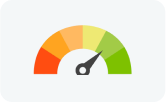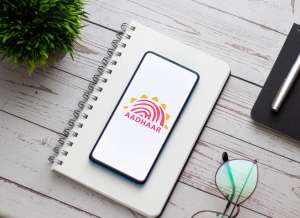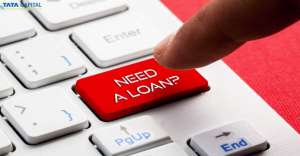A line of credit (LOC), or a credit line, is a loan arrangement where you can borrow money up to a limit and withdraw funds whenever required.
In Indian financial services, various borrowing options are available to individuals and businesses, each with unique features and advantages. One such option is a line of credit, which offers flexibility and convenience in accessing funds as needed.
This article explores the meaning, types, and benefits of lines of credit and their limitations from an Indian perspective. This will help you better understand this financial tool and make informed decisions.
What Is a Line of Credit (LOC)?
A line of credit is a pre-approved amount of money that a borrower can access up to a specified limit as needed. Unlike traditional loans, which require the borrower to take a lump sum amount and repay it in installments, a line of credit allows the borrower to withdraw funds as and when required, only paying interest on the amount used.
How Does a Line of Credit Work?
It is like having a financial safety net. Once approved, you can borrow up to your limit, repay, and borrow again. Pay interest only on what you use. No need for lump-sum borrowing. It’s a dynamic solution for varying financial needs—whether handling unexpected expenses or seizing opportunities.
Understanding Credit Lines in India
To better comprehend credit lines, let’s explore their key characteristics and how they function in the context of India.
Pre-approved Limit: A credit line is a pre-approved borrowing limit granted by a financial institution, such as a lender or a non-banking financial company (NBFC). The approved limit is based on the borrower’s credit score, income, and collateral (if any). The borrower can access any amount up to this limit as needed, without having to apply for a new loan each time.
Flexibility: Borrowers can withdraw funds as needed and repay them at their own pace, subject to any minimum payment requirements. This makes credit lines particularly suitable for dealing with unexpected expenses, managing cash flow gaps, or covering irregular bills.
Interest Charges: A key feature of credit lines is that interest is only charged on the actual amount used. Interest rates are typically variable, and can change over time based on market conditions or the borrower’s credit profile.
Repayment Structure: The repayment process for a credit line involves making minimum monthly payments, often including interest and a small portion of the principal. However, they can pay more than the minimum to reduce their balance faster.
Types of Lines Of Credit (LOC)
Now that you understand LOC meaning, here are the different types of LOC:
– Loan Against Property (LAP): Similar to a Home Equity Line of Credit (HELOC) in other countries, an LAP is a secured line of credit where the borrower’s property is used as collateral. The credit limit is usually determined by the property’s equity amount, making it a popular option for financing home improvements, education, or other major expenses in India.
– Hybrid Term Loan Line of Credit: This type of line of credit is linked to the borrower’s bank account, protecting against hybrid term loan fees and insufficient funds. When the account balance falls below zero, the line of credit is automatically activated to cover the shortfall, up to the approved limit. The borrower pays interest on the hybrid term loan amount and may also be charged an annual fee or other fees associated with the service.
– Credit Card: A credit card is a common form of revolving credit line that allows individuals to make purchases, pay bills, or withdraw cash up to their credit limit. Interest is typically charged on outstanding balances if they are not paid off in full each month. Depending on the card issuer and the specific card product, these may offer additional benefits, such as rewards programs, cashback, or travel perks.
– Trade Credit: This is a type of credit line extended by suppliers to businesses, allowing them to purchase goods or services on credit with deferred payment terms. This form of credit line helps businesses to manage their cash flow more effectively by delaying payments to suppliers, until they have received payment from their customers.
Limitations of Lines of Credit (LOC)
While lines of credit offer flexibility and convenience, they also come with certain limitations. Both the benefits and limitations should be understood before deciding if this financial tool is right for your financial strategy.
– Interest Rates: Lines of credit typically have variable interest rates, which can fluctuate over time. This variability may lead to higher interest rates than traditional loans, especially if the borrowers have a lower credit score.
– Over-borrowing: Since lines of credit offer easy access to funds, borrowers may be tempted to use the funds for non-essential or discretionary expenses, leading to excessive debt accumulation and financial strain.
– Credit Impact: Borrowers who continuously draw on their line of credit and carry a high balance may see their credit score negatively impacted, as credit utilization is a significant factor in determining credit scores.
– Fees: Some lines of credit may come with fees, such as annual fees, maintenance fees, or transaction fees, which can increase the overall cost of borrowing.
– Risk of Reduced or Frozen Credit Limits: In certain circumstances, lenders may reduce or freeze a borrower’s credit limit. This can leave borrowers without access to funds at times of need.
Unsecured vs. Secured Lines of Credit (LOC)
After shedding light on line of credit meaning, we discuss the two types of LOC.
An unsecured line of credit allows you to borrow money without collateral as security. This higher risk is accompanied by limits on how much money can be borrowed, along with higher interest rates. Unsecured LOCs will require higher credit scores on the borrower’s part. Credit cards can be considered unsecured LOCs, as there is no collateral the credit lender can seize on defaulting.
In contrast, secured lines of credit require collateral, which can be assets like property or cars. A common example is the loan against property (LAP), secured by the property itself. Secured lines of credit provide you with higher credit limits and more affordable interest rates than unsecured lines of credit. These are easier to obtain even with lower credit scores. If you are a business owner, these aspects will make secured LOCs more agreeable.
Revolving vs. Non-Revolving Lines of Credit (LOC)
Revolving lines of credit offer ongoing access to funds, providing you the flexibility to borrow and repay at your convenience. As you repay the balance, your available credit increases, and the line of credit renews indefinitely. This continuous cycle creates a revolving, or an open-end credit account. Credit cards are an example of revolving LOCs. When you repay the borrowed amount on a credit card, you are able to borrow those funds again, as long as you do not exceed the credit limit. This is in contrast to installment loans, where you borrow a certain amount of money and repay it in installments. Unless you apply for a new loan, you cannot use the funds again.
Non-revolving lines of credit are different in that once the full borrowed amount is repaid, the credit does not renew, and the account is closed. However, they share some features with revolving lines of credit – credit limits are determined, interest is charged, and you can make payments towards the lender. An overdraft protection plan offered by a financial institution is an example of non-revolving LOC. If your overdraft is linked to a checking account, you are protected from declined transactions and bouncing checks, even if the account balance falls short. An overdraft has to be paid back, with interest.
Who Should Opt for a Line of Credit?
Should you consider a line of credit? If you look at credit line definition, an LOC is a flexible financing option which can fund a wide range of expenses – emergencies, medical bills, marriages, car repairs, home renovations and travel. If you have unpredictable expenses, a line of credit is ideal for you, in comparison to taking on a loan.
If you have a higher credit score, a line of credit is an accessible and convenient option. A CIBIL score of 730 or higher and a stable source of income will assist your application. It is important to consider the terms of your particular line of credit plan.
The Tata Capital Emergency Credit Line Guarantee Scheme (ECLGS)
The Emergency Credit Line Guarantee Scheme, or ECLGS, is a term loan announced by the Finance Ministry for existing business enterprises and MSMEs. The scheme is aimed at helping them:
– Build their current assets
– Fulfil their requirements for working capital
– Meet any operational crisis
– Restart their business
This scheme was announced so businesses and MSMEs affected by the COVID-19 pandemic could overcome business-related economic distress. Tata Capital has made this scheme valid for all its existing TCHFL (Tata Capital Housing Finance Limited) and its TCFSL (Tata Capital Financial Services Limited) clients, provided they fulfil the main eligibility criteria. These include:
– Having a combined loan outstanding of up to Rs. 50 cr as of 29/02/2022 from all member lending institutions.
– An annual turnover of up to Rs. 250 cr FY 2019-20.
– Featuring a borrower account DPD (days past due) that is less than 60 days as of 29/02/2022.
– Having a GST registration except in cases where they are not required to acquire the same.
The assistance of the Finance Ministry, along with the assurance of Tata Capital, this scheme is a reliable way for business owners to build, grow, and sustain their ventures.
Conclusion
By understanding the various types of lines of credit, their potential benefits, and their limitations from an Indian perspective, borrowers can make informed decisions about whether a line of credit is the most suitable option for their specific financial needs.
One such example of a financial institution offering a range of lines of credit loans in India is Tata Capital. They provide customized credit solutions for individuals and businesses, catering to diverse financial needs and requirements.
With the advent of technology, financial institutions like Tata Capital now offer “Instant Line Of Credit Online” services, allowing borrowers to apply and receive approval quickly, further simplifying the process.
FAQs
Lines of credit can be secured or unsecured, each accompanied by particular features. Some common types of lines of credit are personal LOC, home equity LOC, business LOC, demand LOC, and securities-backed LOC.
Lines of credit can be used for various expenses. These can be travel plans, wedding costs, unexpected repair or medical bills, and more.
On applying for a line credit, lenders can conduct credit checks, which can lower credit scores temporarily. Additionally, if you are using more than 30% of the borrowing limit, your credit score can decrease as well.
Yes. This monthly interest is calculated on the daily average balance, and has to be paid at the end of each month.
If you need flexibility, a personal line of credit is a good option. It can cover urgent and dynamic expenses, from vacation costs to medical bills.
A credit card is an example of an LOC. You can borrow money up to certain credit limits based on your needs, and repay at your convenience. You can use these funds at your discretion.
A credit line is a payment option, where you can borrow money up to a limit and repay according to predetermined terms. Whereas, a credit limit is the maximum amount available for use.
The minimum payment on a line of credit is usually provided by the lender in a monthly statement. This can include a part of the principal balance along with interest.


 9 mins read
9 mins read

 Previous Post
Previous Post












